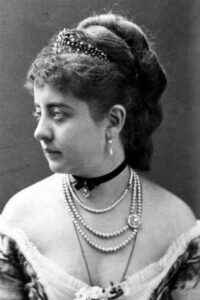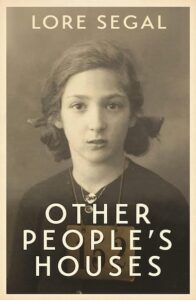By Elodie Barnes | On January 13, 2025 | Updated July 2, 2025 | Comments (0)
Nora Ephron (May 19, 1941–June 26, 2012) was an American screenwriter, film director, novelist, essayist, and journalist. She’s best remembered for her romantic comedy films, including When Harry Met Sally, Sleepless in Seattle, and You’ve Got Mail.
As a prolific essayist and journalist, her trademark skepticism, wit, and intimate writing style made her hugely successful, and she deserves to be remembered just as much for her prose as her screenplays. Read More→
By Nava Atlas | On January 7, 2025 | Updated January 17, 2025 | Comments (11)
Helene Johnson (1906 – 1995) was an American poet associated with the Harlem Renaissance. This selection of poems by Helene Johnson features those from the 1920s, the period in which she was most active as a young poet.
She was just nineteen when her first published poem, “Trees at Night,” appeared in Opportunity: A Journal of Negro Life in 1925. A year later, this journal published six more of her poems.
Her poems also made an appearance in NAACP’s The Crisis and the first and only issue of Fire!!, Langston Hughes’ short-lived publication. As Helene grew aware of the economic and divide facing Black New Yorkers, she began to explore racial themes in her poetry. Read More→
By Nava Atlas | On January 3, 2025 | Comments (0)
At the age of twenty-three, Viña Delmar (born Alvina Louise Croter, 1903 – 1990) became an overnight sensation with her bestselling “Banned in Boston” novel, Bad Girl. Reprinted here is an interview with the young author from 1928, the year of its publication
The controversy over her novel, whose heroine, Dottie, was far from being a “bad girl,” didn’t hurt Viña’s reputation, but served to sell the book, which became a bestseller, and not long after, a well-received early “talkie” film.
Viña would go on to be a playwright and screenwriter active until the 1970s though she has been all but forgotten. No stranger to the entertainment business, she traveled around the U.S. with her parents, Ike and Jennie Croter, Jewish vaudeville and Yiddish theater performers. After dropping out of school at an early age, she found herself more suited to writing than being in the limelight. Read More→
By Taylor Jasmine | On December 30, 2024 | Comments (0)
If you’d like to expand your knowledge of great 19th-century British novels by women writers but don’t have time to commit to the hours required to read and savor them, well-produced mini-series are the next best thing.
Here we explore adaptations of books by Jane Austen, the Brontë sisters, Elizabeth Gaskell, and George Eliot in the format of miniseries.
Many of the novels upon which these productions are based are quite substantial in length, making the multi-episode format more suitable than attempts (which have been made) to condense their contents into the average two-hour film. Read More→
By Taylor Jasmine | On December 24, 2024 | Comments (0)
Louise de la Ramée, (known by her pen name of Ouida; January 1, 1839 – January 25, 1908) was an English novelist of French extraction. Born in Bury St. Edmunds, England, her nom de plume was supposedly suggested by a young sister’s efforts to pronounce “Louise.”
The best-known of her many works are A Dog of Flanders, a children’s book that has been adapted to film numerous times, and Under the Flag. She wrote more than forty novels, plus many short stories and children’s books. She also contributed numerous articles and essays to magazines and journals.
Her novels dealt with all phases of European society, some of her themes being treated with cleverness and skill, often with cynical railing at the weaknesses of her characters. Read More→
By Taylor Jasmine | On December 19, 2024 | Comments (0)
The Lifted Veil by George Eliot is a novella by the esteemed British author best known for weighty books like Middlemarch. She interrupted her work on The Mill on the Floss to work on it. Following is the full text.
The Lifted Veil first appeared in Blackwood Magazine in 1859, the same year that her highly regarded novel Adam Bede was published. It wasn’t published in book format until 1878 as part of a single volume with Silas Marner and Brother Jacob. The Lifted Veil wasn’t published as a stand-alone volume until 1924, more than forty years after the author’s death.
Latimer, the book’s unreliable narrator, is a sensitive intellectual who believes that he can see into the future and read the thoughts of others. These clairvoyant powers, in his mind, are a curse. Read More→
By Lynne Weiss | On December 17, 2024 | Updated December 19, 2024 | Comments (0)
Lore Segal (March 8, 1928 – October 7, 2024) chronicled her experiences as a Holocaust survivor and an immigrant in search of a home who eventually found her way to the United States. Her fiction was oddly humorous and yet deeply insightful.
Poet Carolyn Kizer, writing about Segal’s 1985 novel Her First American in the New York Times Book Review, said Segal came “closer than anyone to writing The Great American Novel,” even though, Kizer noted with a touch of irony, its main characters were Black people and Jewish refugees and it was not written by a man. Read More→
By Nava Atlas | On December 16, 2024 | Comments (0)
Effie Lee Newsome (1885–1979), was a writer, illustrator, and librarian whose poetry for adults and children made her a notable literary figure of the Harlem Renaissance.
From the time her poetry was first published in NAACP’s The Crisis, her work was regularly featured in anthologies and other publications, particularly in the 1920s.
Mary Effie Lee was born in Philadelphia, Pennsylvania, and raised in Wilberforce, Ohio. Her parents were Mary Elizabeth Ashe Lee and Benjamin Franklin Lee. Her clergyman father was editor-in-chief of the Christian Recorder and served as president of Wilberforce University. Read More→







